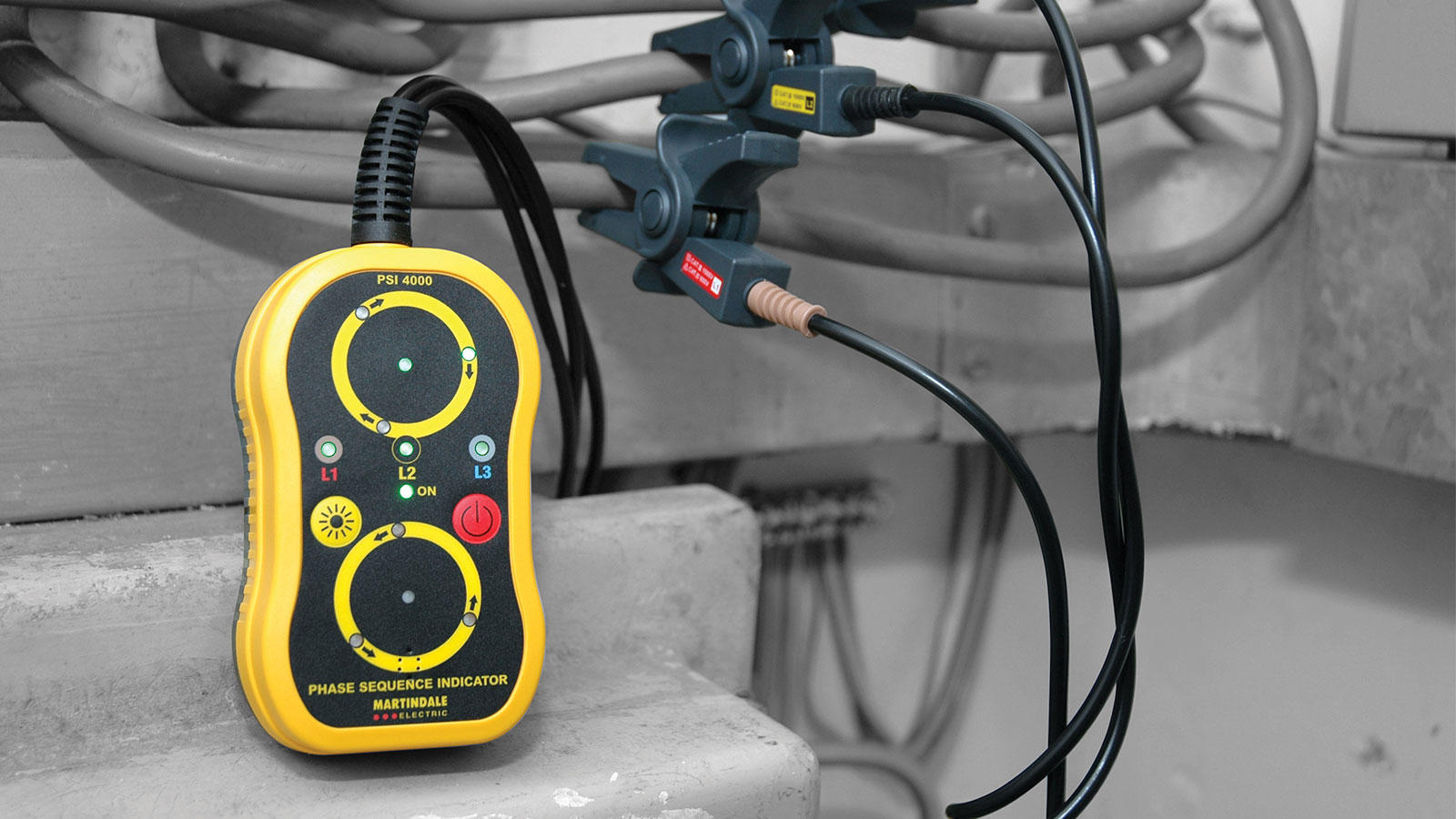Accurate installation and connection of three-phase electrical systems is crucial for both commercial and industrial buildings. Steve Dunning, Managing Director of Martindale Electric, explains why it is vital that engineers test the phase rotation of their electrical systems.
Three-phase electrical supplies are commonplace in most industrial and commercial facilities for a wide variety of applications. Three-phase motors are widely used for many tasks. To guarantee the proper operation of electrical equipment, as well as the safety of workers, correct installation is essential.
Phase rotation refers to the order in which the three phases of an alternating current system are connected. So, naturally, when it comes to testing, you’re simply ensuring that everything has been connected in the right order. In the UK, the three phases are known as L1 (Brown), L2 (Black) and L3 (Grey), where the peak of each AC signal is 120 degrees apart.
Getting the phase sequence wrong can have devastating consequences for plant and machinery with serious implications for machine safety. From motors running backwards through to cooling or lubricating systems underperforming, one wrong connection can lead to a major maintenance headache. It can disrupt operation, cause vast damage to equipment, with all the expense that entails, and potentially injure the user. Correctly testing the phase rotation of the electrical infrastructure is crucial.
Good quality, safe instruments that test which way the phases are rotating will inform the operator of the correct connection order for the proper motor rotation. This can help to ensure that the system is connected and functioning properly and that it is safe for use. Specific test equipment is available to help verify the phase rotation of three-phase circuits.
For instance, a reliable safety solution for detecting phase sequence is the use of battery-operated non-contact phase sequence indicators. These indicators use insulated clips that work by induction, allowing for a reading through the insulation of each phase conductor. This reduces the risk of accidentally touching live parts. The clips are connected in the correct order and the instrument is turned on.
LEDs on the instruments should provide a clear indication of the phase rotation and have a high-intensity setting for working in strong ambient light. Look for instruments that display whether each line conductor has a voltage of between 75- and 1000-volts AC at 45-65 Hz. An audio indication of correct sequence is also often provided by a buzzer.
Clockwise sequence is correctly indicated by some instruments, while anticlockwise sequence is correctly indicated by others. Both types of indicators can also work on uninsulated conductors.
Another solution is a phase rotation indicator which has been specifically designed to quickly and simply prove the presence of all three live phases (or identify which are faulty) and show the sequence of phase rotation when all three phases are confirmed as present. Equipment that provides a fast, effective, battery-free method of identifying unmarked cables and ensures that three-phase outlets and machines are wired correctly are an advantage here.
For a choice between long exposed tips for reaching difficult-to-access contacts and shorter tips for increased safety, look for features such as retractable GS38 shrouds and integral fused leads, crocodile clips and high quality test probes which conform to GS38.
18th Edition multifunction testers can also be used to provide phase sequence indication in addition to their main functions. Like dedicated devices, these use three test leads to undertake the test but display the results on the LCD. Other devices that can verify the phase rotation include Two Pole Voltage and Continuity Testers.


